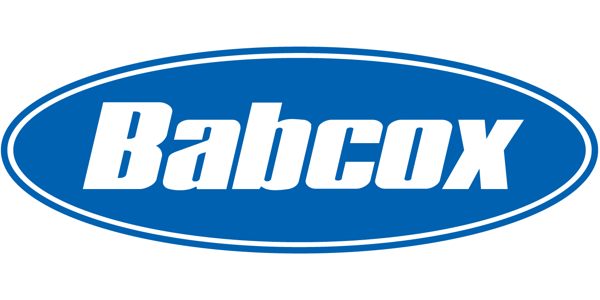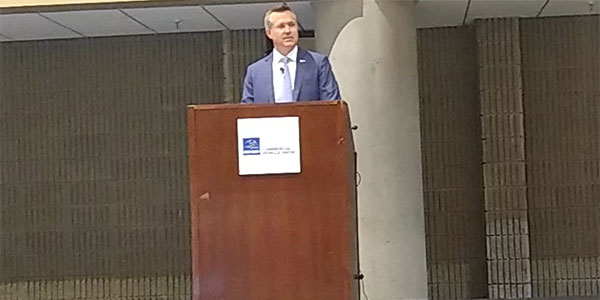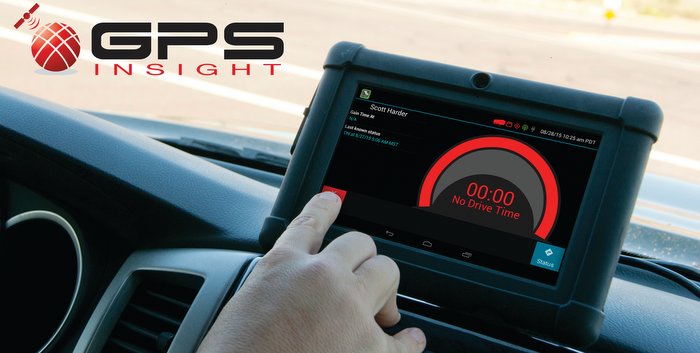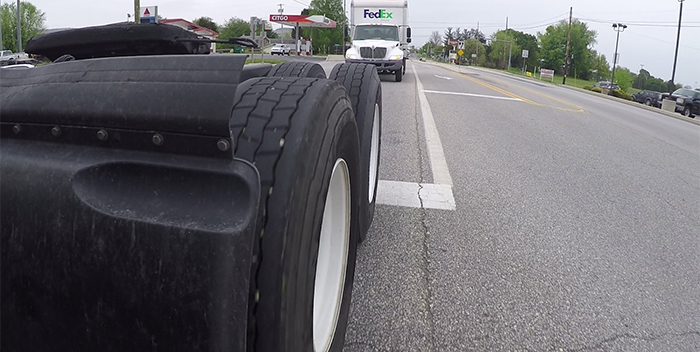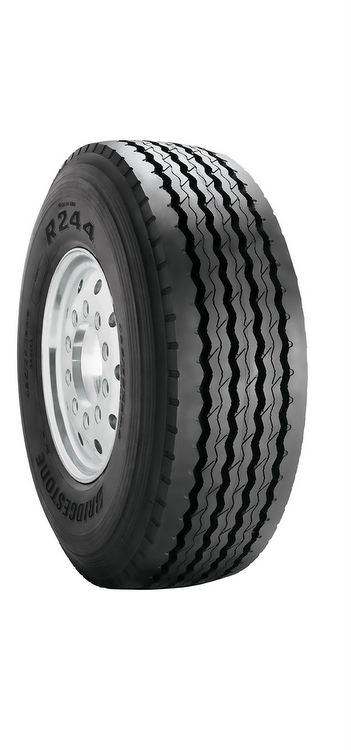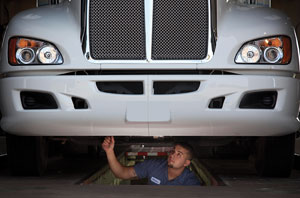 If there’s one truism in the trucking industry, it’s that a truck is only making money if it’s running. If it’s parked for whatever reason, it may not be costing anything in operating expenses, but it sure isn’t contributing to a positive bottom line.
If there’s one truism in the trucking industry, it’s that a truck is only making money if it’s running. If it’s parked for whatever reason, it may not be costing anything in operating expenses, but it sure isn’t contributing to a positive bottom line.
The only way to ensure a truck’s continued operation is to pay attention to its maintenance requirements. On-the-road breakdowns will cost time and money and can quickly damage your relationships with drivers and customers. But what constitutes proper attention to maintenance? The Fleet Equipment Advisory Board recently offered an explanation of how spending money to save money is a key part of today’s modern fleet operation.
Members of the board have successful histories of keeping trucking fleets rolling, carrying freight and personnel safely and profitably. Some of their methods may vary, but their results are clear: spending money on preventive maintenance can save you money down the road.
To do it properly, however, the maintenance supervisor can’t do it alone—it takes a team effort and an active approach to managing maintenance.
“We’re not in the maintenance business any more,” explains Darry Stuart, president and CEO of DWS Fleet and a self-described “limited time executive” helping the trucking industry recognize and implement the challenges of proper maintenance. “We’re in the asset-management business. The shop people, directors of maintenance or supervisors are directly in control of asset management. They’re tied to asset utilization because they are the guys who makes sure the relationship between the truck and the technicians allows the trucks to run all day, every day.”
Bruce Stockton, vice president of maintenance and asset management, CFI, said his title at Con-way reminds him daily of his responsibility. “What we do know is that if you don’t do regular maintenance and you don’t maintain the equipment—whether it’s a truck or a trailer or building, for that matter—you’re going to spend the money anyway.”
Stockton says his company views maintenance just like one of its other core values. “We just don’t violate it. We tell operations that the truck or trailer is due for service and there’s really no squabble. Everyone in the organization understands that when it needs to be serviced, it’s serviced; and it’s pulled out of rotation as needed.”
Bozzutos, a wholesale distributor of food and household items to IGA stores and other small grocery chains in a 12-state region of the northeastern U.S., practices Yankee frugality when it comes to vehicle maintenance, says Bob Hamilton, director of fleet maintenance for the company.
“Maintenance is a huge issue with us because our business philosophy doesn’t have a trade cycle. We currently have some 1997 model Fords that are running day to day, putting an average of 60,000 to 70,000 miles per year. Those trucks are approaching 1.2 million miles on them,” he says.
“When you’re leasing a vehicle that’s going to be traded within 5-7 years, the maintenance approach is entirely different than knowing that you’re going to keep a vehicle forever. Consequently, every time you make a repair, you want it to be your best effort put forward. If you’ve done that from day one and kept up with it, it’s an easy thing to do,” says Hamilton.
“Being proactive and minimizing your unscheduled repairs is the most cost-effective thing you can do,” says Southeastern Freight Lines’ David Foster, vice president of maintenance. “At the same time, though, you have to be sure you’re not over PMing something. There’s a happy medium—or as we ask here, what is the cost of quality? Finding that perfect point can be a challenge and it moves all the time because we continue to learn not only with the equipment we’re operating, but with the people across our system.
The cost of quality—that line in the sand—is what Stuart says is so elusive, and yet so enticing, to fleet maintenance personnel.
“Trust but verify,” suggests Stuart. “The checkbook needs to be controlled by the supervisor; not to the point that you don’t spend money but to the point that you spend money in the right way. Nothing is worse than a truck that comes in for preventive maintenance and then four weeks later comes in for four tires. The downtime just cost you a lot more money.”
Stuart says, “What really changed were upper management decisions looking for short-term results. Those conference table decisions are now controlling the fleets’ management and maintenance operations. It is becoming apparent that most of the ‘old timers’ are like dinosaurs—extinction has set in. The great ‘Doctors of Iron’ are gone and no experienced replacements are apparently in the pipeline. The newly named HR departments began filling the positions by backing into the pay grades or competitive salary survey results. What they did not realize is that there is no real experience being bred and there is a shortage of iron management expertise.”
In other words, the attempt to be the “low cost provider” often results in poor judgment when it comes to repairs. “I believe in fixing it right, but fixing it right is in the eyes of the beholder. If you’re not managing that in a microscopic way, then you’re going to be wasting money,” says Stuart.
“With the cost of goods and labor going up, we’re trying to keep all road breakdowns from occurring by doing good PM in-house,” says Peter Nativo, Transport Service Co.’s vice president of maintenance. Part of the program in place at this bulk liquid transport organization is to look at the Top 10 road failures, identify the cause and eliminate it. Nativo says in some cases the cause has been poor understanding of modern components.
“When we first started looking at the Top 10, our first Number 1 was the alternator. We found out that the one that had always been our spec didn’t have enough amperage for all the electronics in today’s world. We started upgrading to a higher-amperage version on all new tractors and began a replacement program. So whenever a tractor came in for PM, we took off the old one and put on the higher amperage version. By doing that, within a year and a half, the alternator issue, from being Number 1, had fallen completely off the Top 10.”
Stockton says, “Our motto is: ‘If it’s broken, fix it. If you can’t fix it, replace it.’ We don’t squabble with technicians over how much something costs to fix or replace. If we spec’d it on the truck, it ought to work. And if you’ve been fixing things as they need to be repaired, you don’t have the peaks and valleys of the costs that the finance guys in this business get all worked up about. If you’re doing the work as it needs to get done, it levels the maintenance costs over the life of the truck.”
Nativo says he understands the fear many fleets have of spending money in an uncertain economy. “Sure, there are times to make a decision about cosmetic repairs based on how the year’s going or how the economy is, but in that case you also need to think about how it affects your image. If it’s a DOT repair needed—capable of any violation while running the tractor down the road—we will not let that go. Safety items are not a question.”
He suggests fleet managers pay close attention to the partnership with suppliers—are you really getting the best value for what you’re buying? “I think I focus more on that than cutting back on the maintenance of the vehicle. Look for cost efficiencies rather than cutting maintenance,” he says.
Do cancel procedures
“Ignoring maintenance is not an option,” agrees Foster. “If anything, in bad times you tend to focus on what you’re spending and how you can get more efficient with what you’re doing. Not necessarily changing what you’re doing as far as maintaining the equipment, but how you maintain it. A good example might be being more efficient and beating standard repair times. If you have multiple facilities, create a positive competition without reducing the quality. But are you putting off repairs to save money? Cutting costs in that way won’t save any money in the long run.”
Stockton says when times have gotten tough, his company has kept vehicles longer. “We’re keeping trucks a year longer than we had planned. The trucks we’re trading in have 650,000 miles on them—it’s a good thing we didn’t skimp on maintenance the first 520,000 or we’d have been in real trouble.”
He continues: “To me, it just reinforces that you should stick to your guns on best maintenance practices—you just never know. There could be another downturn. Every truck we have—whether it has 60,000 or 600,000 miles on it—we’re treating as if we’re going to keep it forever.”
Of course, doing too much maintenance because “that’s the way we’ve always done it,” can be damaging as well, and often signals a disconnect between management and the repair bay.
Stuart says the difference between hard times and regular times is how you spend the money. Cutting corners can result in damage to other components that require even more costly maintenance next time.
“Really, low cost provider maintenance is achieved with a method I developed years ago: MBWA (management by wandering around). There’s no greater way to understand what’s going on than by spending time wandering around in your shop and talking to people. All the answers are on the floor and all the problems are on the floor, in the parts usage and in the invoices for the parts you buy. The problem is, you have to recognize those things,” Stuart says.
“If supervisors are managing properly and they’re spending time and energy looking and observing, they can corral that stuff and direct it in a fashion to control it. The mistake a lot of fleets make is they put their supervisors making reports or charts and graphs—not that numbers aren’t important, because they are. If you can’t measure it, you can’t manage it. But once you measure it, you need to know how to fix it.”
Stockton says part of the challenge can be alleviated by keeping all parties in the loop with regard to maintenance schedules.
“We plan accordingly, which I think is why there isn’t a big squabble. We can tell them ahead of time when that truck or trailer will be due for its PM intervals. Give the driver a heads up, operations a heads up and in their planning for the that truck, they won’t let it go on the board to take a load until the driver and maintenance say the truck is ready.”
Obviously, however, this is not a universal sentiment. “Guys I network with have the fear that if they take the truck off the road, they won’t have the income. The driver factor plays into it as well. I find most drivers are very cognizant of maintenance requirements, they want it done when it needs to be done. We spend a good part of our new driver orientation emphasizing that that truck is their tool, and they need to help us take care of that tool if they’re going to do their job. Because they’re permanently assigned to that tractor, they need to help us when they hear, see or feel something that’s different; they need to let us know so it can be addressed.”
Addressing the needs of the customer—whomever that is determined to be—is critical, says Foster. “Everything we do is focused on serving our customers; and our customers are defined as operations and the drivers. Our efforts, in turn, make them better able to serve those external customers.”
Foster says it’s a team effort, especially at Southeastern’s maintenance facilities. “They’ll go up on the dock and pull an at-will inspection on stuff backed up to the dock and note those things that need to be repaired, interact with them about whether it’s something that could have been prevented, and if so, try to convey to them how they can help us in that regard. And by identifying the things that haven’t been brought to us for repair, we’re minimizing the downtime for the equipment and the driver. We’ll have them swing by the shop, get things repaired so the driver doesn’t have to do it and doesn’t have an issue enroute,” he explains.
“Our people have been our greatest success in helping us lower our costs because we listen to them. They’ve made some great suggestions about changes we need to make procedurally and/or spec’ing, and they’ve thoroughly embraced the training that we have made available for them. That’s been the key to controlling our costs—that and good communication across the system,” says Foster.
Nativo says Transport Service continually preaches the importance of preventive maintenance and its role in the processes of its drivers. “In each of our major terminals, we have a TV broadcast system that covers different topics each month. One thing we never take off the broadcast is the importance of a good, thorough pre- and post-trip inspection. We require the drivers to do both, and in the broadcast system we explain to them how important they are to prevent road failures on the street, and to share the issues with technicians.”
To encourage the driver’s participation in controlling costs, Nativo says each driver gets a $28 tire gauge and instructions on gauging his tires every day. “One driver recently told me with pride that he had 340,000 miles on his tires because he gauged them every day.”
Hamilton, too, says fleet owners need to have all the departments working together as closely as possible. “Just as with an OEM dealership, where sales, parts and service departments are a three-legged stool, if you have one department not hitting, you’re ending up on the ground.”
Hamilton says he believes in the role of the driver. “It’s key, especially when it comes to fuel economy. And I don’t know that a driver can impact warranty dollars—but abuse dollars, most definitely.”
And as CSA 2010 gains momentum, the relationship between drivers and maintenance will be even more critical. “I think CSA 2010 is going to be a good thing for the industry, for safety and for drivers (in the end),” says Stockton. “Drivers who are conscientious about their equipment—whether it’s a tractor or trailer—will find their job doesn’t really change if they’re paying attention. CSA hasn’t changed the rules, it just enforces the rules we already had.”
Stuart agrees in the importance of the driver in this equation and suggests more communication will bring better results. “There’s a huge wall between drivers and the shop, and I think there’s a huge difference in language. The driver knows the minute something is wrong with the vehicle and the majority of drivers really just want the truck to be trouble-free—but they don’t know how to communicate it.”
Stuart says communication is more important than ever. “With CSA 2010, it’ll be more critical. For 30 years we’ve been wanting drivers to write up trucks so we can fix them…now they’re going to do that and if your operation isn’t prepared to handle that in a quick fashion, you’re going to have late loads. If a driver knows he’s going to get points and they’ll stay with him forever, he’s not going to leave the yard unless he believes he can get through the day without a problem.”
Stuart cautions, however, that the time to start planning is past. “If the maintenance guys are worrying about this today, it’s too late. If they don’t have a practice in place, if they haven’t figured it out by now, they never will.” So if preventive maintenance in your fleet is seen as an expense and not an opportunity, what can you do? Stuart suggests calling in an expert.
“Unfortunately, you have to understand the game before you can coach it, and for many owners, the only thing they understand is sales and the checkbook and when the checkbook gets thin and sales are down, panic starts setting in. And when panic sets in, the temptation is to just stop spending,” Stuart cautions. “Nobody is spending just to spend, but they may not have the experience to manage through it.”

